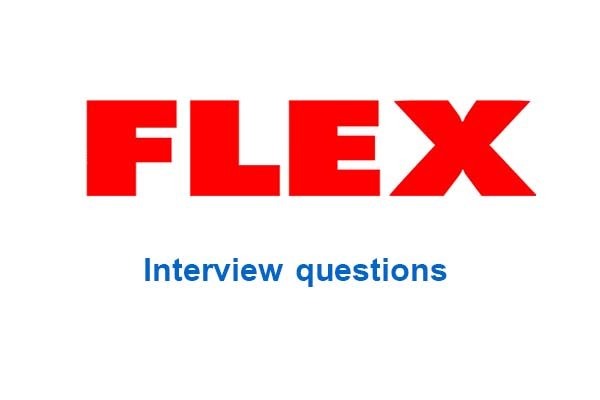While preparing for the interview candidates should focus to understand the concept and application to their best. It is important to grasp the architecture, principles, techniques, and the framework including the term ology associated with flex. We focus to make you comfortable by providing the necessary terminology and questions. After being familiar with these questions, you will surely be able to handle the questions asked in the interview. Not just this but knowing these questions will also increase your confidence level. Here, we are sharing 10 interview questions of FLEX, which are generally asked.
Flex Interview Questions

Below are the list of Best Flex Interview Questions and Answers
- Both are used for the purpose of editing, but item renderer is used for displaying visual elements.
- Item editor is used for editing purpose. Item editor can pass data back from the particular control to save it as a new value for an item being edited. We can also use item renderer as editor by using Boolean property renders editor.
- Item renderer is used to format and display the contents in components whereas item editor allows us to edit the displayed content
Exclude (or Exclude Class) tag helps to control the set of choices, available in Flex Builder. But it never excludes the classes from linking. There is an MXML option that depends on how the application is been compiled. Generally, the classes that are included are those that are referenced from the root application or classes, either directly or via some other class that is referenced directly or not from the root application or classes.
View stack is a component used to display different data, at once. View states are related views of a single set of data.
View stack components cannot be shared easily between the different views, they had to be created each time view is changed.
Cairngorm architecture can be explained as the process of implementation of several design patterns in order to form a lightweight architectural framework. Cairngorm follows the process of separating the view and business logic. This process is known as the Model-View-Controller pattern or (MVC).
The types of Cairngorm architecture are as follows:
- Model Locator: This Stores all the application’s Value along with shared variables that too at one place.
- View: This allows one or more Flex components bundled just like a named unit, bound to data in the Model Locator.
- Front Controller: This receives Cairngorm event details and then works ahead to map them to the cairngorm commands as and when required.
- Command: This handles business logic, calls cairngorm Delegates or Commands, and other updates.
- Delegate: This is created by a command, and regulates the remote procedure calls and gives the results back to that old command.
- Service: This defines the remote procedure calls to connect to remote data stores.
Difference between array and array collection is as follows:
- Array Collection is a wrapper class based on Array.
- Array Collection includes sorting, filtering features apart from Array.
- Array Collection automatically refreshes/updates the view whenever the change happens in Array Collection.
In order to cancel the default behavior of the event, few classified ways of the event class can be used in event listener functions in order to affect the behavior. In this few events are associated with default behavior. Therefore in cases, the same event listener can cancel the behavior by using the prevent Default method. Prevent Default method will work only if the Cancellable property is true else it will not.
Latest Interview Questions-
Silverlight Interview Questions
-
Entity framework interview questions
-
LINQ Interview Questions
-
MVC Interview Questions
-
ADO.Net Interview Questions
-
VB.Net Interview Questions
-
Microservices Interview Questions
-
Power Bi Interview Questions
-
Core Java Interview Questions
-
Kotlin Interview Questions
-
JavaScript Interview Questions
-
Java collections Interview Questions
-
Automation Testing Interview Questions
-
Vue.js Interview Questions
-
Web Designing Interview Questions
-
PPC Interview Questions
-
Python Interview Questions
-
Objective C Interview Questions
-
Swift Interview Questions
-
Android Interview Questions
-
IOS Interview Questions
-
UI5 interview questions
-
Raspberry Pi Interview Questions
-
IoT Interview Questions
-
HTML Interview Questions
-
Tailwind CSS Interview Questions
-
Flutter Interview Questions
-
IONIC Framework Interview Questions
-
Solidity Interview Questions
-
React Js Interview Questions
Subscribe Our NewsLetter
Never Miss an Articles from us.
